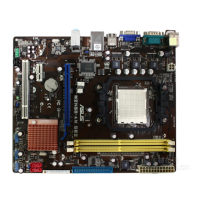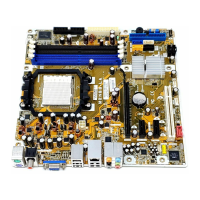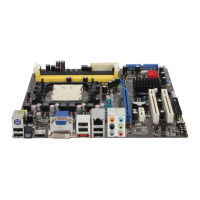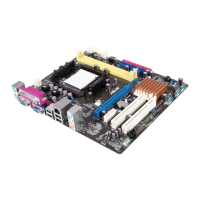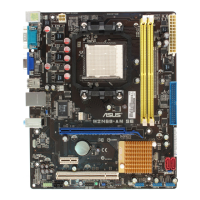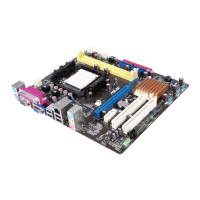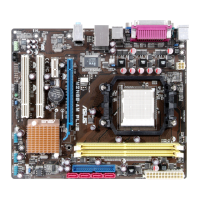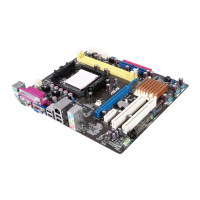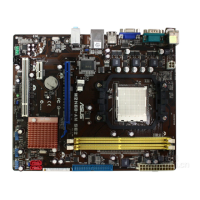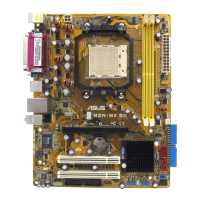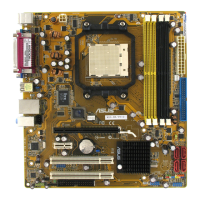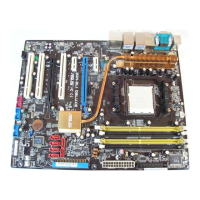Do you have a question about the Asus M2N68 and is the answer not in the manual?
Utility for recovering corrupted BIOS data.
Utility for updating BIOS from a USB flash disk.
Description of the instant-on OS for quick internet access.
Important precautions before installing components or changing settings.
Information on CPU socket and processor compatibility.
Step-by-step guide for installing the CPU into the socket.
Instructions for mounting the CPU heatsink and fan assembly.
Guidelines for installing and configuring memory modules.
Procedure for inserting a DIMM into the memory socket.
Procedure for removing a DIMM from the memory socket.
Steps for installing expansion cards into motherboard slots.
Steps for configuring installed expansion cards via software/BIOS.
Information on motherboard jumpers and their functions.
Procedure to clear CMOS settings using the CLRTC jumper.
Overview of BIOS management and update utilities.
Instructions for creating a bootable floppy disk for BIOS updates.
Guide to using the EZ Flash 2 utility for BIOS updates.
Guide to using the AFUDOS utility for BIOS updates.
Guide to recovering BIOS using the CrashFree utility.
Guide to using the ASUS Update utility for BIOS management.
Introduction to accessing and navigating the BIOS setup utility.
Overview of the Main menu in BIOS setup.
Configuring IDE and SATA devices in BIOS.
Configuring primary IDE device settings in BIOS.
Configuring SATA device settings in BIOS.
Accessing advanced system settings in BIOS.
Configuring CPU and system frequency settings.
Options for CPU overclocking and frequency adjustments.
Configuring CPU-related features like virtualization and Cool'n'Quiet.
Configuring advanced chipset settings.
Detailed memory configuration options in BIOS.
Configuring Error Correcting Code (ECC) memory settings.
Configuring onboard devices like serial and parallel ports.
Setting the sequence of bootable devices.
Configuring boot-related settings like Quick Boot and Logo display.
Configuring system security settings like passwords.
Running the ASUS EZ Flash 2 utility for BIOS updates.
Enabling or disabling the ASUS Express Gate feature.
Information and installation of the ASUS Express Gate feature.
Utility for recovering corrupted BIOS data.
Utility for updating BIOS from a USB flash disk.
Description of the instant-on OS for quick internet access.
Important precautions before installing components or changing settings.
Information on CPU socket and processor compatibility.
Step-by-step guide for installing the CPU into the socket.
Instructions for mounting the CPU heatsink and fan assembly.
Guidelines for installing and configuring memory modules.
Procedure for inserting a DIMM into the memory socket.
Procedure for removing a DIMM from the memory socket.
Steps for installing expansion cards into motherboard slots.
Steps for configuring installed expansion cards via software/BIOS.
Information on motherboard jumpers and their functions.
Procedure to clear CMOS settings using the CLRTC jumper.
Overview of BIOS management and update utilities.
Instructions for creating a bootable floppy disk for BIOS updates.
Guide to using the EZ Flash 2 utility for BIOS updates.
Guide to using the AFUDOS utility for BIOS updates.
Guide to recovering BIOS using the CrashFree utility.
Guide to using the ASUS Update utility for BIOS management.
Introduction to accessing and navigating the BIOS setup utility.
Overview of the Main menu in BIOS setup.
Configuring IDE and SATA devices in BIOS.
Configuring primary IDE device settings in BIOS.
Configuring SATA device settings in BIOS.
Accessing advanced system settings in BIOS.
Configuring CPU and system frequency settings.
Options for CPU overclocking and frequency adjustments.
Configuring CPU-related features like virtualization and Cool'n'Quiet.
Configuring advanced chipset settings.
Detailed memory configuration options in BIOS.
Configuring Error Correcting Code (ECC) memory settings.
Configuring onboard devices like serial and parallel ports.
Setting the sequence of bootable devices.
Configuring boot-related settings like Quick Boot and Logo display.
Configuring system security settings like passwords.
Running the ASUS EZ Flash 2 utility for BIOS updates.
Enabling or disabling the ASUS Express Gate feature.
Information and installation of the ASUS Express Gate feature.
| ECC | Yes |
|---|---|
| Number of memory slots | 4 |
| Maximum internal memory | 8 GB |
| Processor socket | Socket AM2 |
| Processor manufacturer | AMD |
| USB 2.0 connectors | 6 |
| PS/2 ports quantity | 2 |
| USB 2.0 ports quantity | USB 2.0 ports have a data transmission speed of 480 Mbps, and are backwards compatible with USB 1.1 ports. You can connect all kinds of peripheral devices to them. |
| Firewire (IEEE 1394) ports | 0 |
| Audio output channels | 7.1 channels |
| Motherboard form factor | ATX |
| LAN controller | Realtek RTL8211CL |
| Networking features | NVIDIA nForce Gigabit MAC |
| BIOS memory size | 64 Mbit |
| RAID levels | 0, 1, 0+1, 5, JBOD |
| Depth | 236 mm |
|---|---|
| Width | 305 mm |
